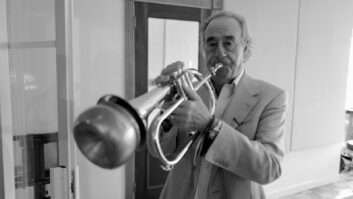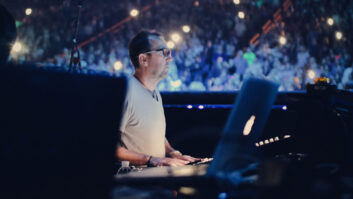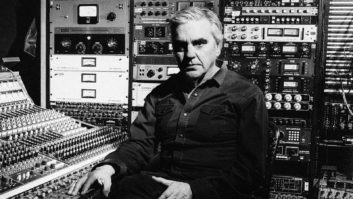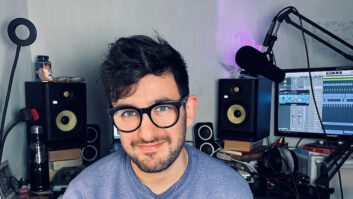New York, October 17, 2011 — Jim Anderson is an overachiever. As a professor at New York University’s Tisch School of the Arts and a Chairman of the 131st Audio Engineering Society (AES) Convention, Anderson remains extremely active in the recording community in his academic and professional capacities, as well as in his role as a freelance recording engineer/producer. He just finished recording projects for jazz musician James Carter and GRAMMY® Award-winning Cuban pianist Gonzalo Rubalcaba, and most recently was involved with a massive oral history project for the AES which documents many significant technical milestones the audio industry has achieved over the last several decades.
At any given time, Anderson may be working on several different recording projects at once, whether they involve projects with his students at NYU or are full-fledged commercial releases. No matter what the scope
or scale of the project, Anderson relies on a very special piece of monitoring equipment in his home time and time again: Antelope Audio’s Zodiac+ D/A converter (DAC).
What drove you to acquire the Antelope Audio Zodiac+ DAC?
JA: What I’ve noticed over the past year or two is that file transfer protocol (FTP) sites have become much more ubiquitous — mastering engineers are encouraging clients to listen on a high-resolution format. In the past, I would ask them to burn me a reference CD, but with the Zodiac, I’ve been able to listen to audio in 24/96 or 192 kHz in my own home. What I have been able to hear is absolutely arresting; the Zodiac+ makes my system at home seem very much like listening to a mix in the mastering room. I can hear everything, and without jitter or distortion. In the past, I wasn’t able to listen to anything better than 16 bit at 44.1 kHz, except on my SACD player.
Can you describe where the Zodiac+ fits into your workflow?
JA: It really helps me evaluate the work that I’m doing. For example, if my mastering engineer is working unattended, I can listen at home and provide solid feedback. I don’t have to imagine what they are describing in their notes — I can actually hear it. With the Zodiac+, I hear an openness, transparency and depth that I’ve never heard before. We did a little blind testing with it alongside another DAC that cost 2 or 3 times the cost of the Zodiac, and the Zodiac stood up and did very well indeed.
Can you comment on the overall function and simplicity of the unit?
JA: I like equipment that is intuitive, so you don’t have to think about it that much. The best equipment just works as it should with no fuss. With the Zodiac+, all you need is a straight USB connection into the box, and then a couple of RCAs and an analog out. Once it is plugged into the computer, it shows up on the AudioMIDI section of the Mac and it is works as it should. It is just brilliant. Total set-up time took all of two minutes — it really was plug and play.
Do you see any potential applications in the classroom?
Absolutely. I think that where many students are falling short is not being able to hear what they are doing. If students really want to know what their work sounds like, they should be using a solid DAC like the Zodiac —this could be a fantastic way for them to hear the hi-res material that they are recording and mixing.
What has the Zodiac+ enabled you to do that you couldn’t do before?
The Zodiac+ has truly taken my home system into the 21st century. There is a clarity and a fullness in my system that I haven’t heard before. We just did a remixing and re-mastering of Patricia Barbers’ Cafe Blue. The fact that I could listen to Bob Ludwig’s mastering of this in 24/192 at home just made all the difference. I had the mixes and the mastered tracks, so with the Zodiac+, I could make an intelligent comparison. Now I am able to combine the ease of everything I am doing on the computer with the high quality output of what one normally expects from a great studio or mastering house.







